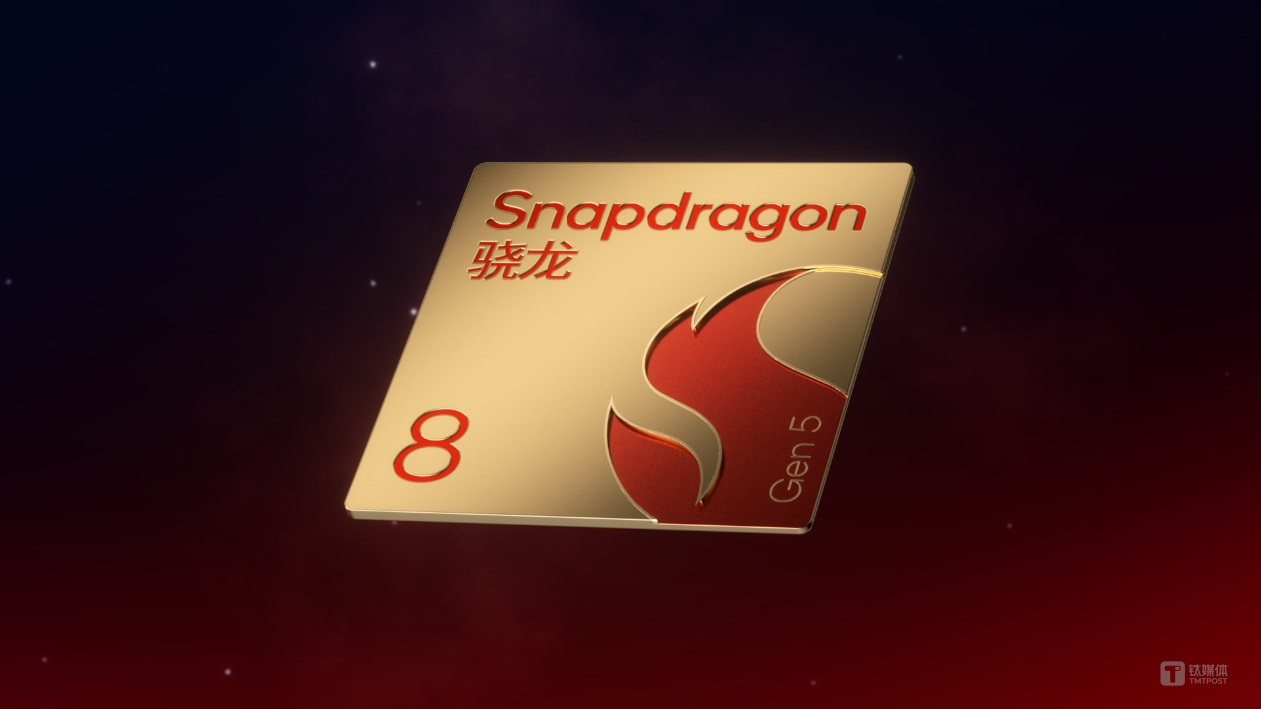
Qualcomm on Thursday introduced the Snapdragon 8 Gen 5 Mobile Platform, strengthening its portfolio in the upper tier of the Android smartphone market as competition with MediaTek intensifies and handset makers prepare for a new round of premium device launches.
The release marks Qualcomm's push deeper into a dual-flagship strategy for its 8-series chips, aligning its product roadmap more closely with rivals such as Apple and reinforcing its position in a segment that remains crucial for brand perception and pricing power.
The Snapdragon 8 Gen 5 follows the debut of the higher-tier Snapdragon 8 Gen 5 Ultra Edition earlier this year. Though positioned slightly below the Ultra, the new platform carries the same CPU architecture and many of the same system capabilities, signaling Qualcomm's intention to broaden access to its top-level performance features.
Qualcomm said the chip integrates its custom Oryon CPU—previously exclusive to top-end platforms—featuring two "super cores" and six performance cores. The company claims a 35% improvement in single-core performance and a 36% uplift in multi-core processing over the previous generation, alongside a power-efficiency increase of up to 42%.
"This tailor-made approach allows performance to be optimized for specific use cases, achieving better energy efficiency that far surpasses standard off-the-shelf solutions," said Ma Xiaomin, senior director of product marketing at Qualcomm.
Compared with competing platforms, Qualcomm says the Gen 5 consumes 36% less power at peak multi-thread performance, and can deliver up to 12% more performance under equal power conditions.
A key focus for the Snapdragon 8 Gen 5 is AI performance—now one of the main differentiators in premium smartphones as manufacturers race to deliver more on-device intelligence.
Qualcomm says the chip boosts AI capabilities by up to 46%, with individual task improvements ranging from 22% to 52% across image classification, object detection and language understanding. These upgrades feed into enhanced imaging features, enabling real-time tone adjustment, improved sky and skin-tone rendering, and an added plant-tone optimization function.
The GPU also receives substantial changes, adopting the same tile-based architecture used in the Ultra Edition. Qualcomm reports an 11% performance gain and a 28% improvement in energy efficiency over the previous generation.
Benchmark comparisons released by the company indicate the Snapdragon 8 Gen 5 outperforms competing chips by 11% in AnTuTu results, 16% in Geekbench 6 multi-thread tests, and 5% in single-thread scores.
The platform incorporates the Snapdragon X80 5G modem-RF system, which Qualcomm describes as delivering improved connectivity, lower power usage and greater spectrum flexibility. The modem is the first to integrate NB-NTN satellite communication capabilities directly into the SoC, eliminating the need for additional hardware.
Ma said Qualcomm is "already prepared for satellite communications—just waiting for the ecosystem to be ready."
The introduction of the Gen 5 and Gen 5 Ultra Edition has caused confusion among consumers, partly due to Qualcomm's transition from earlier names such as Gen 3 and Gen 2. Company executives say the updated naming reflects a more unified branding logic based on performance level, release timing and platform positioning.
Chris Patrick, senior vice president and general manager of Qualcomm's handset business, said the broader demand for premium smartphones was a key factor in launching the Snapdragon 8 Gen 5 at this time.
"As market demand for flagship smartphones continues to rise, the fifth-generation Snapdragon 8 has emerged to meet—and even exceed—consumers' ever-evolving expectations, bringing flagship-level performance to more consumers around the world," he said.
The shift effectively turns the Snapdragon 8 series into a two-tier flagship lineup, mirroring the "standard vs. Pro" approach taken by Apple's A-series processors.
With the addition of the Snapdragon 8 Gen 5, Qualcomm's full smartphone platform portfolio now spans the 4, 6, 7 and 8 series, forming a clearer segmentation where each series includes standard, plus-tier and S-tier variants.
The Snapdragon 8 series remains the company's premium anchor. The Ultra Edition is positioned as the top-end choice for advanced users, while the standard Gen 5 offers similar flagship-class experiences at a broader set of price points.
According to Qualcomm, major smartphone makers including OnePlus, vivo, iQOO and Motorola are expected to release devices powered by the new platform in the coming months.
The updated Snapdragon lineup arrives as Qualcomm faces increasing pressure from MediaTek, whose Dimensity flagship chips have notched gains in performance and market traction this year. A stronger dual-flagship structure could give Qualcomm greater flexibility in competing across price tiers and device categories.
Analysts say the Gen 5 launch underscores Qualcomm's effort to defend its dominance in the high-end Android segment and close performance gaps with Apple's top-tier processors.
Industry observers expect more handset makers to adopt dual-flagship chip strategies, especially as AI workloads become central to user experience and as the smartphone market seeks new catalysts after years of stagnation.







